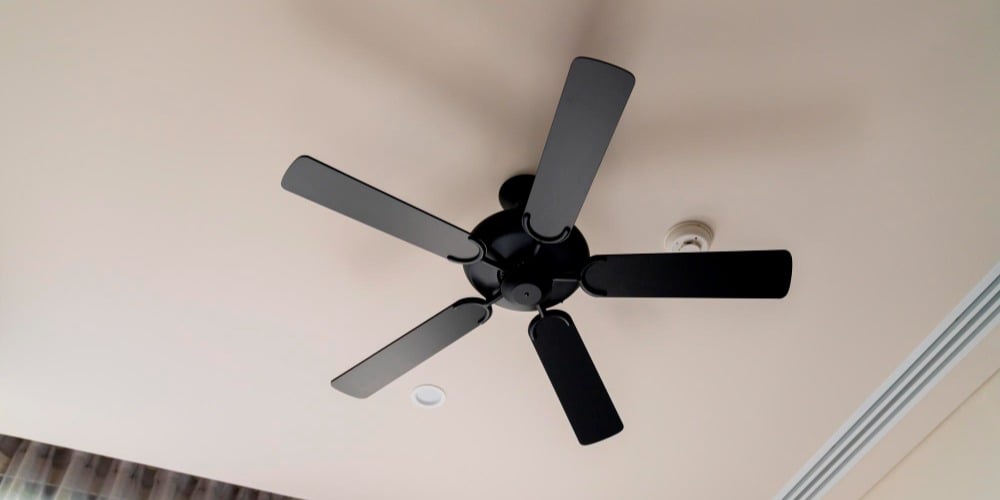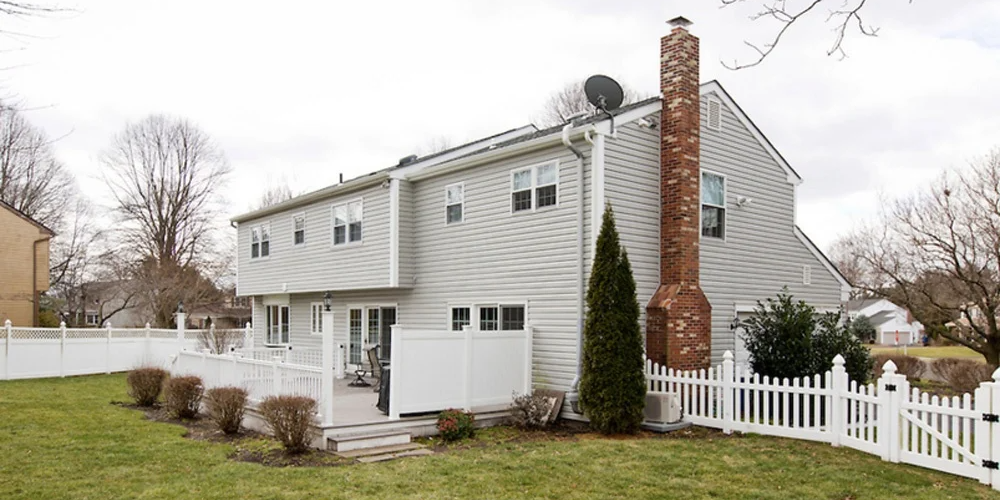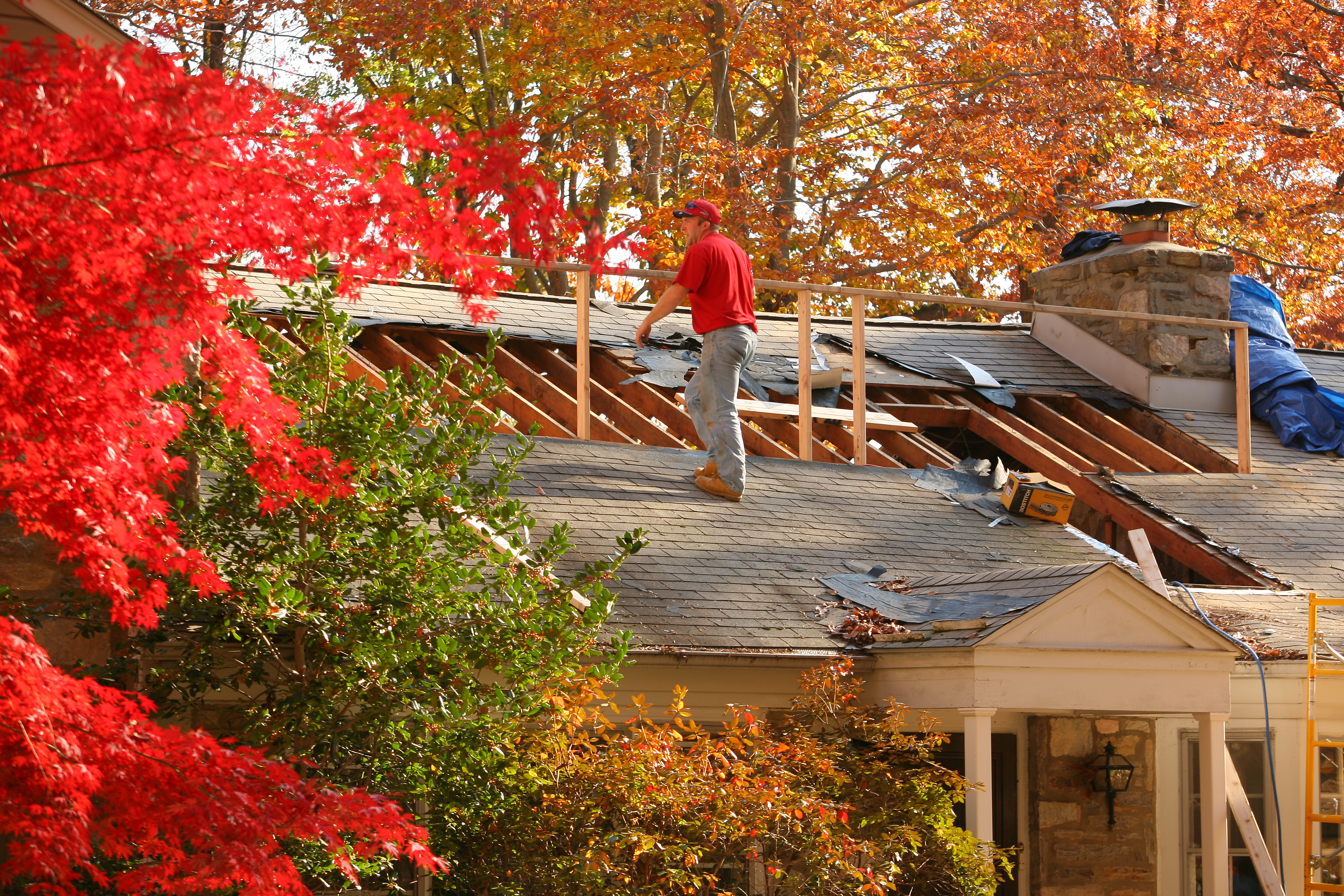The transition from fall to winter is a quick one for most of the United States — especially in our home base of Bucks County. One day you’re walking the dog outside in shorts, and the next day you’re scraping frost off of your car.
![]()
Those of us in Pennsylvania appreciate, or at least tolerate, each of the four seasons. As we dive into our closets to bring out the cold weather clothes, it’s just as important to put together a winter home preparation checklist.
By being proactive when winter weather hits, you’ll lower your electric bill, prolong the life of your home, and keep your family safe if any unforeseen storms hit. Follow this cold weather checklist to prepare your house and your family for those grueling months.
Winter Preparation Checklist for Inside the Home
Reverse Your Ceiling Fans

If your fans have an option to rotate the other way, use it to run the fan’s blades in a clockwise direction when you start using heat.
Since heat rises, the fan will produce an updraft and push down into the room heated air from the ceiling. This may save you some money and allow you to turn the thermostat down a degree or two.
Seal Cracks Around Doors and Windows
Use caulk around your home and to fill in gaps between your doors and windows. Seal any cracks between trim and siding, around window and door frames, and where pipes and wires enter your home. This is an important step as it will prevent moisture from getting inside the walls.
How to check if you have a leak? You can either close a door or window on a strip of paper, and if the paper slides easily then your weatherstripping isn’t doing a good job. You can also take a candle and see if the flame flickers at any spot along the doorframe — just be careful around the curtains!
Check Your Fireplace, Chimney, and Furnace
-1.jpeg?width=1000&height=500&name=Oreland%20Mill%20living%20room%20(1)-1.jpeg)
Your fireplace has been sitting dormant for the past several months, so before firing it up call an inspector to check that it’s clean and that everything is in good repair. This will prevent chimney fires and carbon monoxide from creeping into your house.
The same goes for your furnace and any other heating tools in your home. Check your furnace filter and make an appointment to get your heating system checked and tuned.
Protect Entryway Flooring
The entranceway to your home is going to take a beating with all the damp feet coming through the next few months. Protect this section of flooring by using floor mats inside and outside of your home.
Tell the little ones (and big ones, let’s be honest) to stamp their feet before and after and leave all shoes by the door. Provide a boot scraper or brush outside and a waterproof tray inside for placing wet shoes and boots.
Check Your Smoke and CO Detectors
It’s a perfect time to remember to change the batteries in your smoke and carbon monoxide detectors since it’s probably been a while. After you change the batteries, vacuum them with a soft brush attachment and test them out to make sure they’re working correctly.
General Cleanup
Get rid of odds and ends around your house that are taking up space. Think of this as an excuse to purge your home and get rid of things you don't need.
Don't forget to go through cleaning supplies and chemicals to get rid of any that are old, and put them in clearly labeled containers. Keep a clear space around anything that produces heat and could be flammable.
Winter Preparedness Checklist for Home Exteriors

Store Hoses and Turn Off Outdoor Water
By leaving excess water in your pipes and hoses during freezing temperatures, the water may freeze, expand, and crack your faucet or pipes. Turn off any shutoff valves on water supply lines that lead to exterior faucets. While you’re at it, drain hoses and store them in a shed or garage.
Stow Your Mower
This is a big one. If your mower sits with gas in the tank for months, the gas will start to deteriorate causing irreparable damage to internal engine parts.
John Deere offers these preventative steps: Add fuel stabilizer to keep your fuel fresh longer, then fill the gas tank to the top with more stabilized fuel — and run the engine briefly to allow it to circulate. If not, use up the fuel in your mower before winter.
Inspect Your Roof
You can inspect your roof by staying on the ground and using binoculars. Be sure to look for warning signs such as damaged, loose, or missing shingles that may leak when snow melts. If you see masses of mold or lichen, this could mean that your roof is decaying underneath and needs to be looked at by a professional.
If you have a flat roof, rake or blow off leaves and pine needles which can hold moisture. Be sure not to sweep, as this can expose the asphalt to sunlight.
Clean Your Gutters
This one is pretty self-explanatory. With each changing season, you should be cleaning out your gutters for the new batch of storms that could come through.
If your gutters are full of leaves and junk, it may cause water to back up against the house and damage roofing, siding, and wood trim. Clogged gutters can also cause ice dams and can lead to expensive repairs.
Prune Your Plants
Give your plants a fighting chance with the dropping temperatures. Now that the summer growth cycle is over, trim your trees and plants so they are at least three feet away from your house. This will stop leaking and dripping onto your house as well as any accidental damage if tree limbs freeze and fall off.
Wintertime Projects Don't Need to Wait
Winter is the perfect time to get things done around the house: the bathroom that needs to be refurbished, the kitchen that needs to be ripped out and replaced, or the basement that you’ve wanted to have finished so the kids have a place to go. If you have a new deck in mind for the spring, you should consider having it built over the winter so that when those occasional warm days of March show up your new deck will be ready and waiting for you.
You may be thinking of having an addition or major renovation done this year, but feel like you have to wait for the weather to be temperate. Not so -- our team works year-round, and winter doesn't slow us down! It is very common for our skilled team to carry out all sorts of projects, including large home additions and exterior renovations during the winter months. We work hard to ensure your family stays warm and comfortable during the process, no matter the season.
Prep Your Home for Cold Weather With These Tips
Follow this winter preparedness checklist for an easy transition into the colder months and to keep your family and home safe.
The changing of the seasons is a common time for homeowners to examine their living spaces and think about what they would like to change. Many of these projects end up being much bigger than spring cleaning or putting things away for the summer.
If you need some help, give us a call today. Tilghman Builders is a premier home remodeling contractor and renovation company serving homes in Bucks and Montgomery Counties. We take pride in turning your current home into your dream home.



